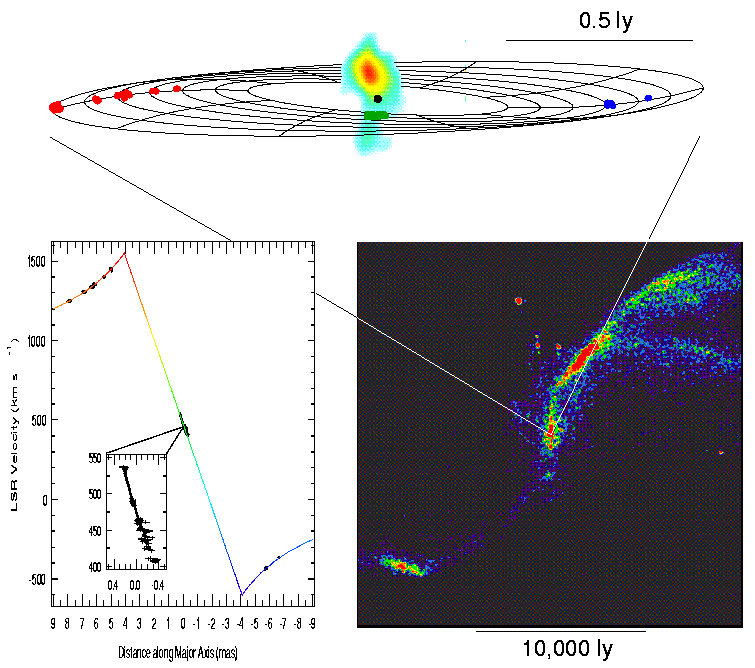NGC 4258
Observed 1994-9922 GHz
VLBA + VLA + Effelsberg
Image by J. Moran, et al
The disk is viewed nearly edge-on from Earth and orbits the black hole at a speed of more than 2 million miles per hour. Using the Very Long Baseline Array, the astronomers observed the Doppler shift of the masers at the disk's sides at 4 to 8 month intervals over more than three years. This shift, or "proper motion," combined with previous observations in which astronomers had measured the speed of the orbiting disk and ascertained the mass of the black hole, has enabled the scientists to make the distance determination.
Previous observations using Cepheid variable stars and the Hubble Space Telescope had set the distance at 27 or 29 million light years. The difference in these two distance determinations will make a significant impact on future calculations of the size and age of the Universe. For more information see "Radio Astronomers Set New Standard for Accurate Cosmic Distance Measurement".
